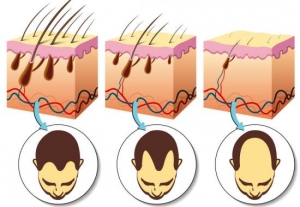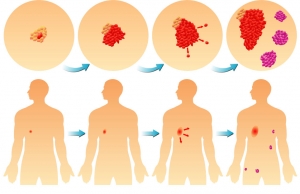Our last issue of our Health Science News Page focused on polyphenols, which are the nutrient compounds present in various plants that help in protecting plants from insects, diseases, pollutants, and damage from ultraviolet rays. In Part 1 we discussed a few of the important and most researched polyphenols - specifically quercetin, curcumin, green tea extract, and resveratrol - and their actions and functions in the human body.
Phytonutrients are natural components of plants with important functions such as protecting plants from insects, diseases, draught, ultraviolet rays, and pollutants. The best known phytonutrients are the polyphenols, carotenoids, flavonoids, catechins, and isoflavones. There are various sub-classifications of phytonutrients which include ligans, phenolic acids, and indoles. Flavones are present in vegetables such as parsley and celery, and flavolones are present in tomatoes and other citrus fruits. Catechins are present in fruits, red wine, green tea and chocolate. Ligans are found in various legumes, cereals, grains, and flax seed. In addition to protecting plants against various pathogenic organisms and ultraviolet rays, polyphenols also act as antioxidant and anti-inflammatory agents.
In our last Health Science News Page, we discussed some of the general aspects of the role of micronutrients in pregnancy. The placental development begins in the first weeks when the woman is not even aware she is pregnant. The health of the placenta determines the overall growth and development of the baby throughout the entire course of pregnancy.
Pregnancy is one of the most exciting times in a woman’s life and every expecting mother wishes for a healthy baby. Yet, the progress and outcome of each pregnancy depends on multiple factors such as the mother’s diet and life style before and during pregnancy, the genetic makeup of the parents, and the physical and psychological health of the woman.
Every woman of childbearing age should take care of her health all the time. The early days and weeks of pregnancy are critical for fetal development, when a woman may not be aware that she is pregnant. In the first 8-12 weeks of pregnancy, a woman’s body undergoes rapid changes, some experience morning sickness and lose important nutrients.
Although in our society it has gained cosmetic importance, hair on the head and entire body is one of the distinguishing characteristics of mammals. The main function of hair is to regulate body temperature by facilitating evaporation of sweat in hot weather and to create additional insulation by closing the skin pores in cold weather. Despite its important function, the hair shaft itself is not living tissue. Tiny blood vessels at the base of every hair follicle feed the hair root to keep it growing. Yet, the hair we see on the body contains only dead cells. As the new cells grow at the base of the hair follicle, the older cells die and are forced along the follicle towards the scalp. It is normal to shed approximately 100 to 150 hairs a day. Hair is made of a protein called keratin, and hair color is determined by the presence of melanin secreted by pigment cells. As we age, these pigment cells die and the hair turns gray.
The global supplement market is $82 billion, and the US supplement industry contributes $37 billion to that number. Consumers spend billions on dietary supplements trusting in their beneficial effects. Faced with countless options and a worldwide market, choosing supplements can be overwhelming. Rarely are consumers supplied with sufficient scientific information to base their decisions on and usually they only have a company’s marketing materials. Dr. Rath Research Institute conducts academic research in the area of natural health and provides a scientific basis for the development of unique synergy based micronutrient combinations.
Although a balanced diet is one of the best ways to obtain nourishment for everyone, the majority of children are not getting enough micronutrients from the food they eat. Too few fresh fruits and vegetables and consumption of highly processed food results in chronic deficiency of essential micronutrients in children impairing their growth and health and making them prone to diseases. Malnutrition in children is a problem not only in developing countries. In their quest for massive food production, the developed countries have indiscriminately used pesticides and chemical fertilizers and other poor farming practices which has led to severe depletion of nutrients in the soil. In addition, micronutrient deficiencies are widespread due to the global promotion of highly processed food. A study published in 2004 in the Journal of American College of Nutrition confirms a significant decline in the nutritive value of food produced in the last 50 years.
Sarcomas are cancers of connective tissue such as hard tissue (bones), soft tissue (muscles) and tendons. Although sarcomas are uncommon at any age, they are relatively frequent in children. Every year in the USA approximately 1500-1700 children and young people under the age of 20 are diagnosed with bone and soft tissue sarcomas. Sarcomas are one of the most life-threatening cancers in children, and survival ranges from 59%-68% depending on factors such as age, other risks (i.e., tumor location, gender, environment, genetics), prescription medications and other drugs, etc.
A synergistic combination of micronutrients comprised of various vitamins and minerals is essential for survival and maintaining optimal health. Vitamins are organic substances produced by plants or animals, while minerals are inorganic elements present in the soil and water and are absorbed by plants. The main source of minerals for humans is through the plants we eat. However, a study published in 2004 in the Journal of the American College of Nutrition concluded that in the past fifty years there has been significant decline in the nutritional content of vegetables and fruits with regards to the amount of vitamins C and B2, protein, calcium, iron, and phosphorus. Based on their results, the authors estimated that there would likely have been similar declines in other nutrients as well, such as magnesium, zinc, and vitamins B6 and E. Aggressive farming practices, and the abundant use of chemical fertilizers, pesticides, and other harmful chemicals are the main reason for the nutritional decline. It is claimed that today one would have to eat eight oranges to derive the same amount of Vitamin A as our grandparents would have obtained from one.
Sarcoma is a cancerous growth developing in the cells of the connective tissue. Primary cancers that develop in the soft connective tissues such as in the muscles, nerves, blood vessels, and fat cells, are called soft tissue sarcomas, versus osseous sarcomas, which develop in hard connective tissue such as in the bones and cartilage. Connective tissue is abundantly present everywhere in the body, and therefore soft tissue sarcomas can occur anywhere. However, the most common locations for soft tissue sarcomas are in the arms and legs, followed by the organs in the abdominal cavity. While it is a rare type of cancer and constitutes about 1% of all adult cancers, the American Cancer Society estimates that in 2015, approximately 12,000 adults will be newly diagnosed with soft tissue sarcoma, and 4,870 adults may die due to this disease.









